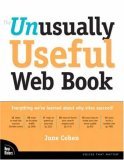Planning is an important, yet often underserved step in building a Web site. Too often sites are started for the sake of having a site and then the owners do not see a return on their investment. This can be avoided by planning up front. By identifying your objective, goals, and what differentiates you from the competition, your site can be a great asset to your business.
Identify your Web goals
Determining specific goals is arguably the single most important step in creating your Web site. Without a clear objective you may find that your Web site is not adding value to your business or your mission. Your goal might be something like:
- Increasing revenue
- Attracting new customers
- Reducing the number of phone calls you get for basic information like hours and location
Identify your Web audience
It is important to know who the audience is for your Web site. Your Web audience may differ from your local customer base. Knowing this will help you create content that is valuable to your audience. Before preparing your content, think about these questions:
- Who is your Web audience?
- Why do they need your Web site?
- How will your Web site make their life easier?
Know your competition
Let’s face it. You have competition. You may like to forget about them, but knowing what makes your site different from your competitor’s site is important. Consider the competitors you already have identified in your daily business, but also consider what other competitors you may have on the Web. Because the internet makes this world a much smaller place, you may have a competitor for Web customers that is not a competitor in your physical location. Know what other businesses are doing on the Web.
If you're starting out with a new Web site, or if you just need to learn how to improve your site, June Cohen’s book, The Unusually Useful Web Book
Tomorrow in part 2 of this series: drafting your content.








0 comments:
Post a Comment